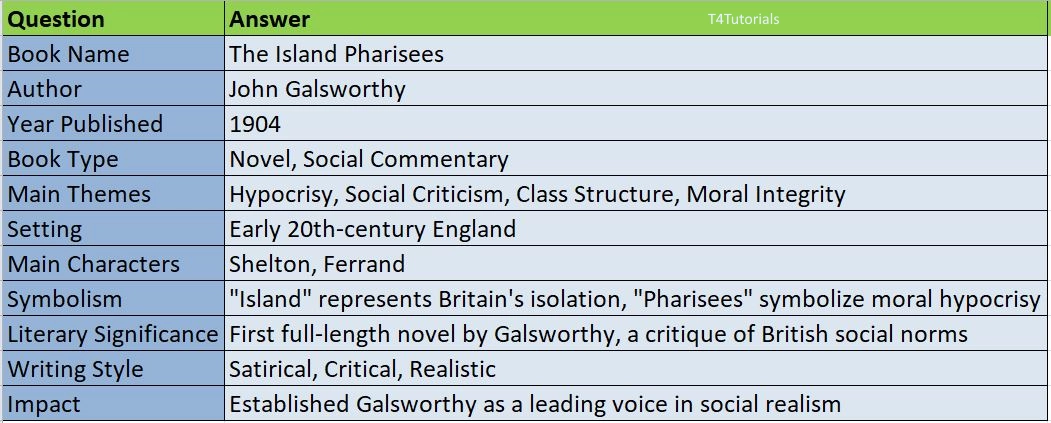Summary:
The Island Pharisees is a novel by John Galsworthy, first published in 1904. It is his first full-length novel and serves as a social critique of British hypocrisy, particularly among the upper and middle classes. The novel follows the protagonist, Shelton, an upper-class Englishman, who becomes increasingly aware of the rigid moral hypocrisy of British society. Shelton, who initially conforms to societal expectations, undergoes a transformation as he begins to question the values and traditions he was raised with. His encounters with various characters, including a free-spirited foreigner named Ferrand, force him to reevaluate his beliefs about morality, class, and justice. The novel highlights the contrast between outward respectability and inner dishonesty, portraying how societal norms often prioritize appearances over genuine integrity. The Island Pharisees is a sharp critique of the British elite, showing their unwillingness to embrace change or acknowledge their own flaws.
10
Score: 0
Attempted: 0/10
Subscribe
| Question | Answer |
| Book Name | The Island Pharisees |
| Author | John Galsworthy |
| Year Published | 1904 |
| Book Type | Novel, Social Commentary |
| Main Themes | Hypocrisy, Social Criticism, Class Structure, Moral Integrity |
| Setting | Early 20th-century England |
| Main Characters | Shelton, Ferrand |
| Symbolism | “Island” represents Britain’s isolation, “Pharisees” symbolize moral hypocrisy |
| Literary Significance | First full-length novel by Galsworthy, a critique of British social norms |
| Writing Style | Satirical, Critical, Realistic |
| Impact | Established Galsworthy as a leading voice in social realism |